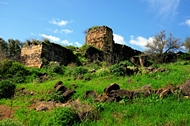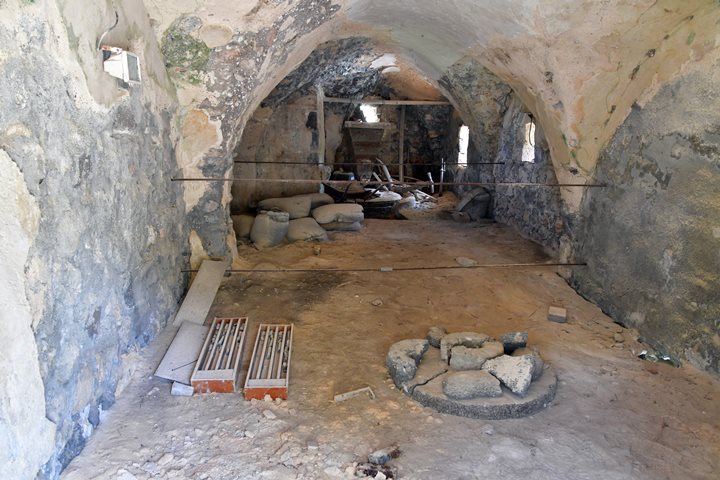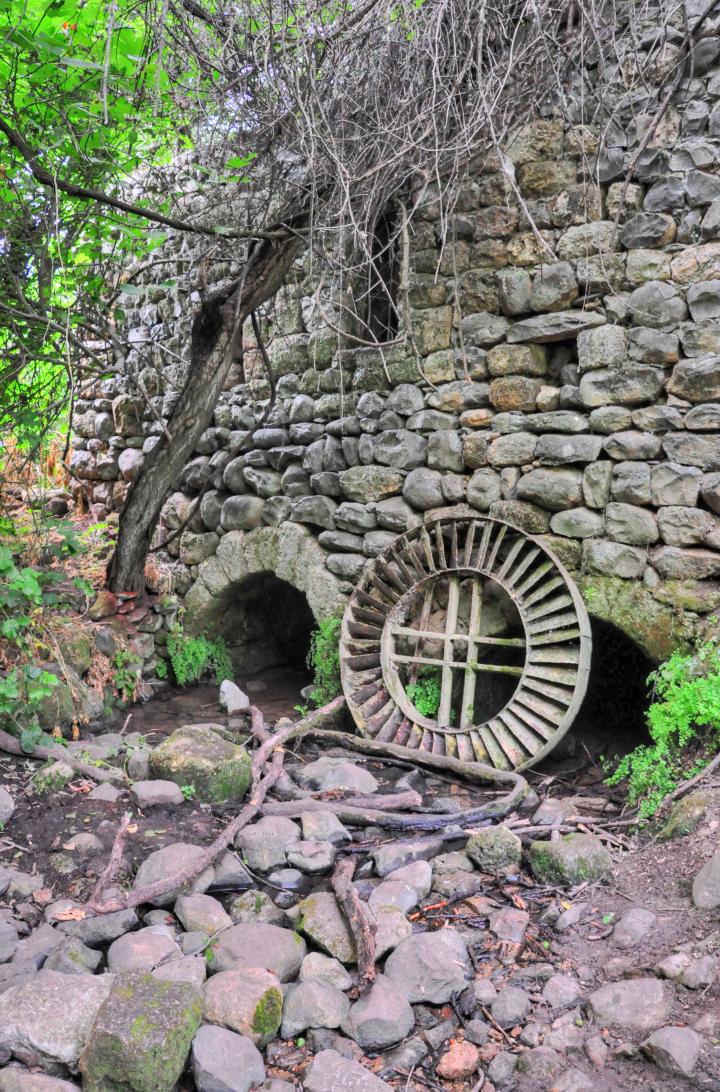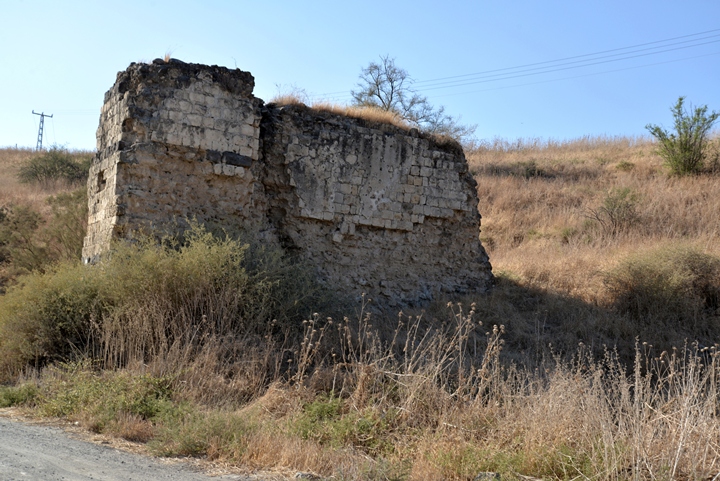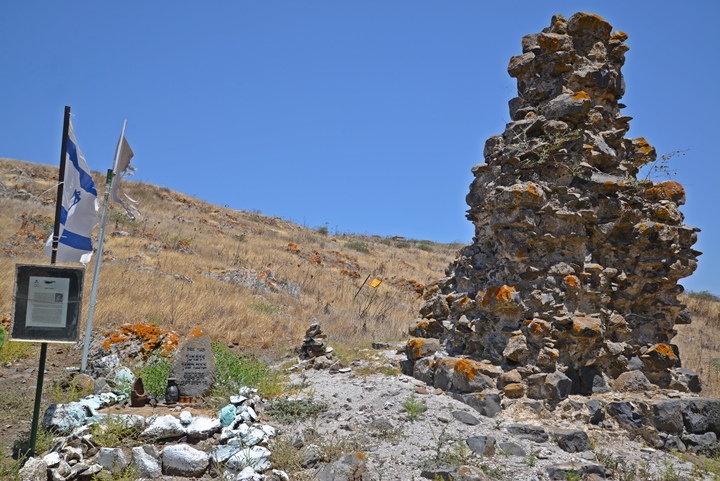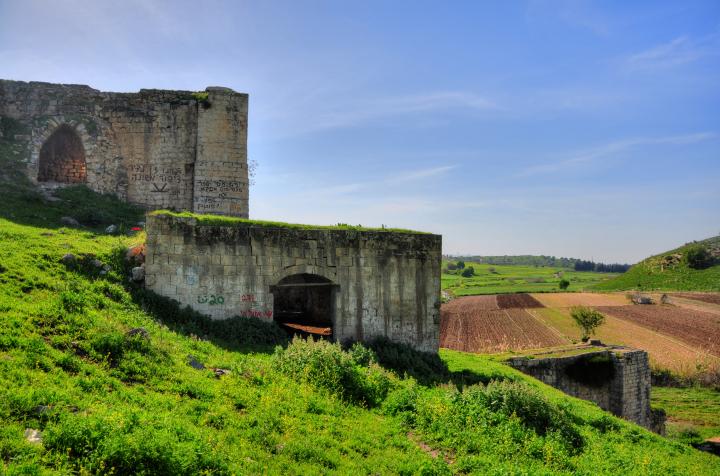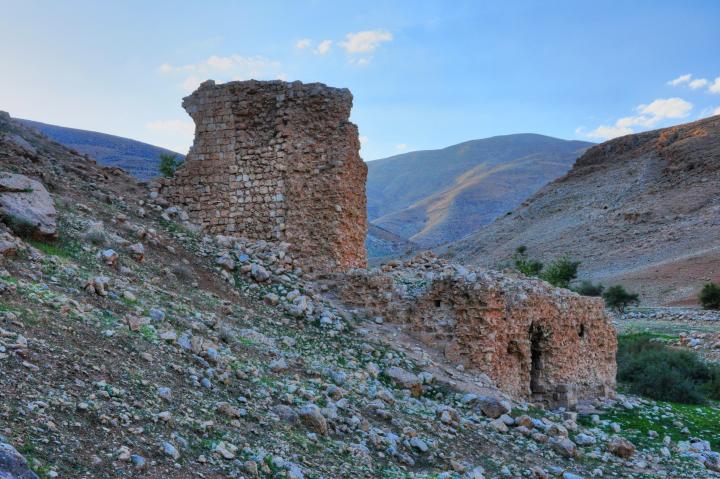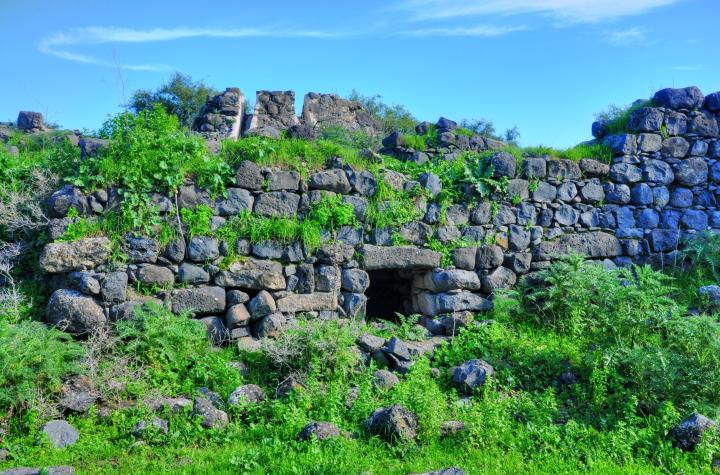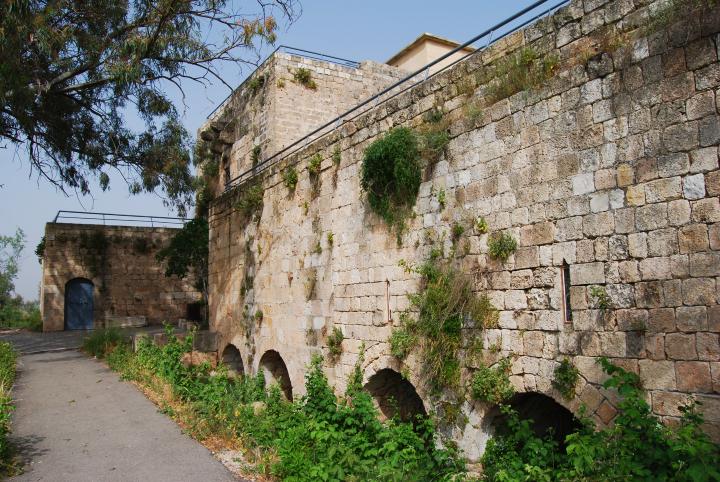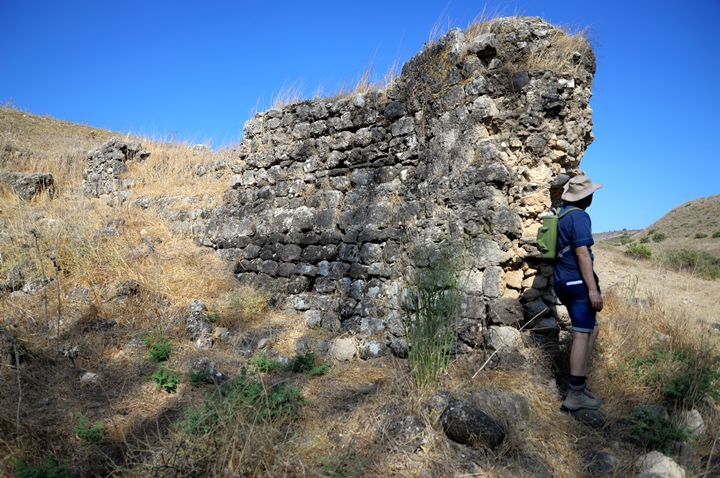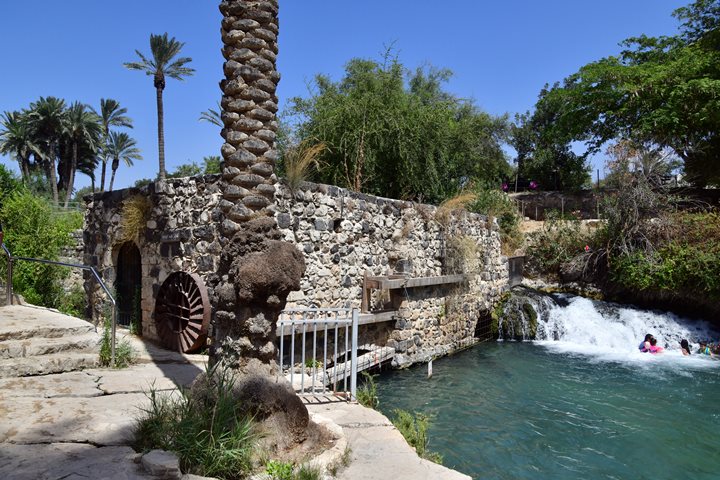Flour mills were popular in the Holy Land during the Crusaders, Mameluke and Ottoman periods.
Home > Info > Structures > Flour mills
Contents:
Overview
History
Structure
Sites
Etymology
Links
Overview:
Flour mills were popular in the Holy Land during the Crusaders, Mameluke and Ottoman periods. Ruins of many water powered mills are found in Israel along the streams.
History:
- Crusaders
In the 12th century, the Crusaders revolutionized the farming industry in the Holy Land. To increase their profits and finance their military force, they introduced water powered mills to modernize two sectors – sugar and flour. The sugar industry was mainly managed by the Knights order of Hospitallers, while the Knights order of Templars managed the wheat business in the Holy land.
Flour mills were an important aspect of daily life in the Holy Land. Flour mills were used to grind grains such as wheat, barley, and oats into flour, which was used to make bread, a staple food in the region. The Crusaders established many flour mills throughout the Holy Land, particularly in areas they controlled, such as Jerusalem, Acre, and Tyre. These mills were typically operated by local peasants who were often forced to pay high taxes to the Crusaders in exchange for using the mills. The Crusaders also built mills in their own castles and fortifications, which were used to provide flour for their armies and to generate income from milling fees.
One of the most famous flour mills from the Crusaders time is the “Tower of David Mill” in Jerusalem. This mill was located near the Tower of David, one of the key fortifications in the city, and was operated by the Hospitallers, a Christian military order. The mill was built in the 12th century and was used until the 16th century. Today, the mill has been restored and is open to visitors as part of the Tower of David Museum.
Flour mills played an important role in the economy and daily life of the Holy Land during the Crusaders time, providing a vital service for the production of bread and other foods.
- Later periods
From the Crusaders period until the establishment of the state of Israel, dozens of water powered mills were installed near rivers and streams. Water was conveyed along aqueducts to a lower altitude, then the water fell down a chimney to turn a wheel that rotated the grinder. The mills were used to grind grains for flour production, while some were used to crush sugar cranes.
Structure of mills:
A common mill is composed of the following elements:
- Dam – to collect water from a stream to the aqueduct
- Aqueduct – to convey the water from a higher altitude to the mill downstream
- Water inlet into the chimney
- Chimney for dropping the water to a lower altitude
- Turning water wheel
- Water outlet
- Aqueduct for using the excess water for farming
- Wooden box holding the grains
- Grinding stone
- Sacks to fill the flour
- Storage rooms for grains and flour
The process of producing the flour was this: Falling water turned the water wheel, spinning a vertical shaft attached to a grinding stone. Wheat grains were introduced into the wooden box, and the grains fell unto the grinding stone where they would be crushed, creating powder – flour. Flour was then collected and packed into sacks, and the owner kept one tenth of the yield as the fee.
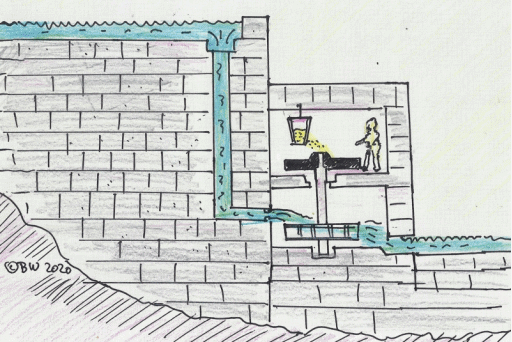
An example of the interior of a flour mill is from Tel Amal.
__________________________________
Sites with Mills:
Following are sites with mills that are featured in BibleWalks. Click on the site’s name to see more information on each site.
- An ancient water-powered flour mill is located in the center of the nature reserve. It was built 150 years ago and operated until 1948.
- At the outlet of Nahal Tsalmon are ruins of many flour mills, used to grind the grains extracted from the wheat that was grown in the plain of Ginosar. These mills were operated by the power of the falling flow of water, which was diverted from the stream from an upstream point. Water flowed through channels and fell down through a chimney on a wooden wheel that turned the grinding stone around – thus crushing the grains.
- During the late Ottoman period (19th-20th Century) a stone and mud village was located on the mound. The village’s residents were former African slaves, which is the source of the name of the village (Ubeidiya in Arabic means village of little slaves). The only noticeable remain is this wall – remains of a water mill standing north of the mound.
- The Samiya valley in Samaria passes on the east side of the ancient ruins. Waters from the spring irrigates the small valley, continuing its flow down hill towards the winding valley that eventually flows to the Jordan river. Just above the valley are remains of an aqueduct, an arched bridge and ruins of an Ottoman period flour mill. The power of the spring waters were used to turn the mill crushing stones, in order to crush the wheat grains into flour.
- In Orkha are ruins of a Medieval village and Caravansary, and a Roman/Byzantine period settlement, in the southern Golan region. A section of a wall was incorporated into a memorial . This wall is the remains of a flour mill.
West Nahal-Zippori (Sepphoris)
- South of Tell West Khali are the remains of 2 connected flour mills dated to the Ottoman period. These flour mills were operated by the power of the falling flow of water, which was diverted from the creek from an upstream point. The water flowed through channels, fell down on a wooden wheel that turned the grinding stone around – thus crushing the wheat into flour.
- Ruins of an ancient flour mill are located along the brook. It was built at the end of the 18th century by the family that resettled near the ancient site of Fazael.
- A water-powered flour mill (gristmill) was built in the site, reusing the ancient stones. It was powered by water that were channeled by an aqueduct from a higher point along the river. The type used here was identical to the mills in the nearby Jordan park and in Tell Dan. The water was channeled to a slide, which with its force turned a horizontal wheel turned around a vertical axle. Note that this is not the common vertical-wheel mill in the Holy Land, were the water fell vertically unto a vertical wheel which turned around a horizontal axle.
- Another water based installation is located nearby – a water powered flour mill. The trail ascends to the Matroof flour mill, which uses the power of the water to operate grinding stones. The flour mill serviced the villages in the northern Golan heights region until the 1970s. The date of its construction is not known, but is several hundred years old. Its name (“Matruf”) is from Arabic and means: whirling.
- A two-story Crusader flour mill and fortress, which is located near the lakes on the north-west side. The flour mills were in operation during the Crusaders period (1099 until 1291), and destroyed by the Mamelukes (end of 13th century). The Ottomans rebuilt the flour mills and they were in use until 1925.
Tel Rekhesh, Nahal Tabor
-
- The waters of Tabor stream were used to power a flour mill. Remains of the mill are located to the west of the hill.
Ein Shakhal, Nahal Tabor
Another mill is located east of the spring of Ein Shakhal, in the valley of Tabor, east of Tel Reskesh.
Along the ‘Asi stream in Gan Hashlosha park are two flour mills.
____________________________________________________________
Etymology (behind the name):
- Gristmill – Its etymology derives from the verb grind. Grist is grain that has been separated from its chaff in preparation for grinding
Links:
* External links:
- Ancient flour mills in Israel (Hebrew)
- Nahal Amud flour mills conservation project – “Eighteen flour mills, ten bridges and five diverting dams were identified in this section of the river, which is about 2.5 kilometers long”.
* Internal links:
__________________________________________________________
BibleWalks.com – exploring the Bible places in Israel
Aqueducts <<<—Previous info—<<< All Info >>>—Next —>>> Wine presses
This page was last updated on Sep 21, 2024 (add Tel Amal)
Sponsored links:
